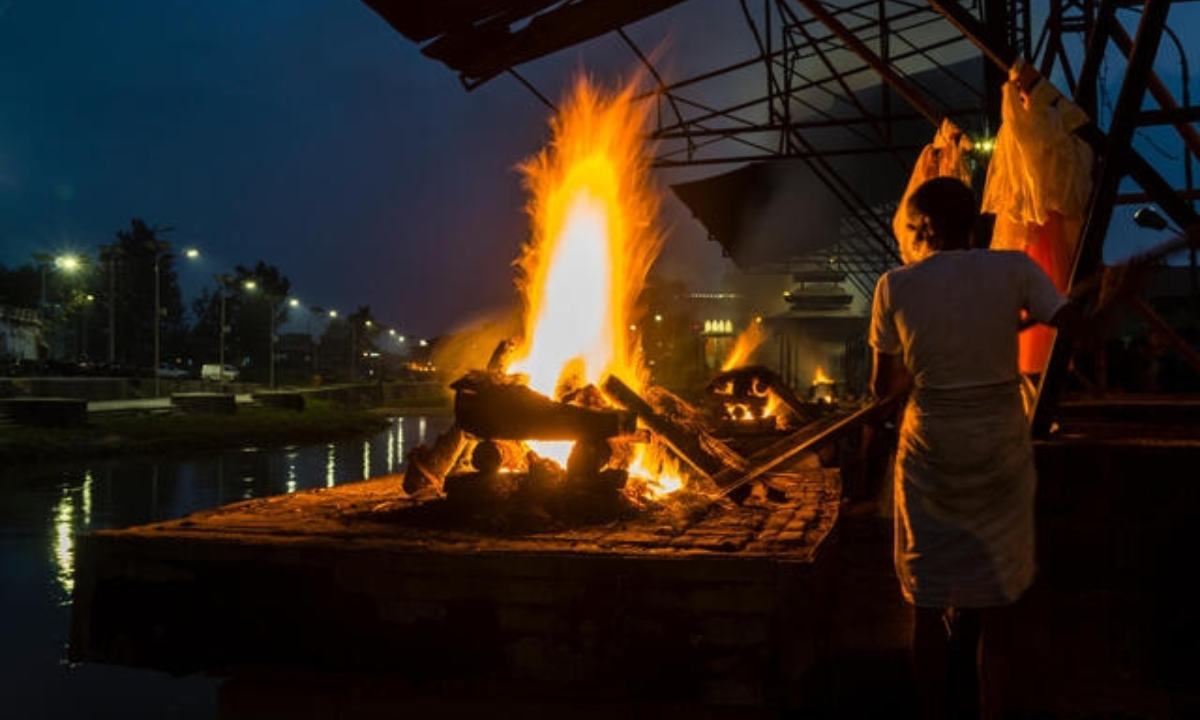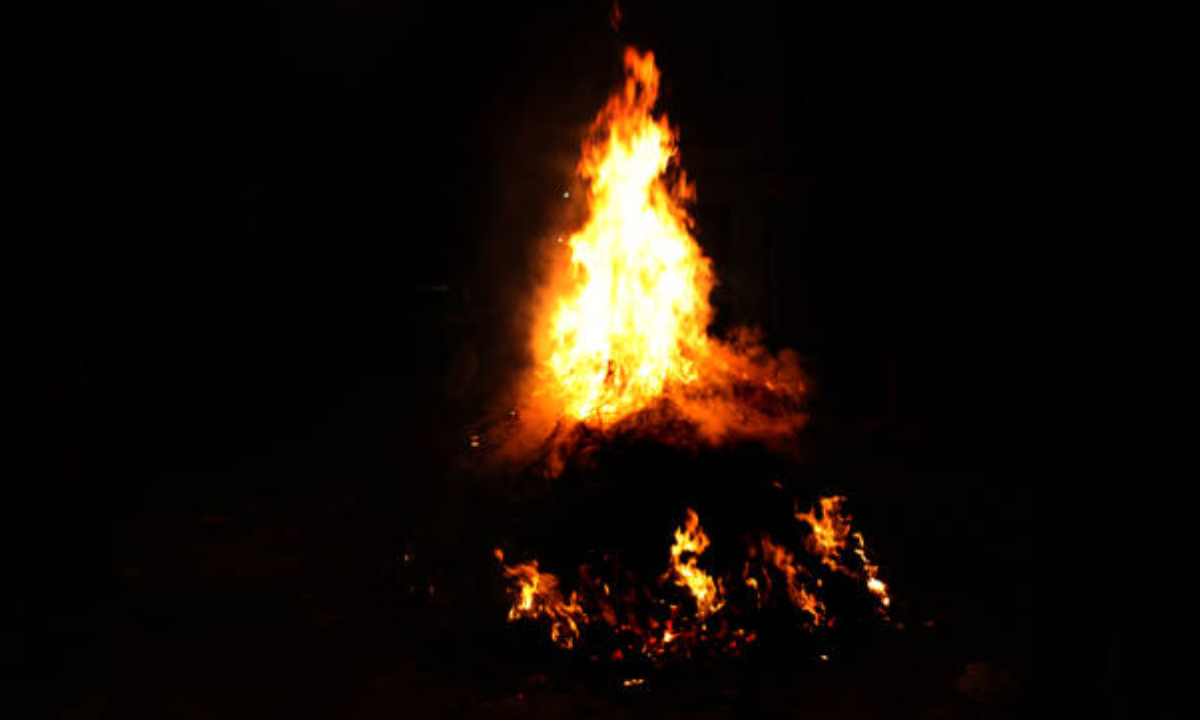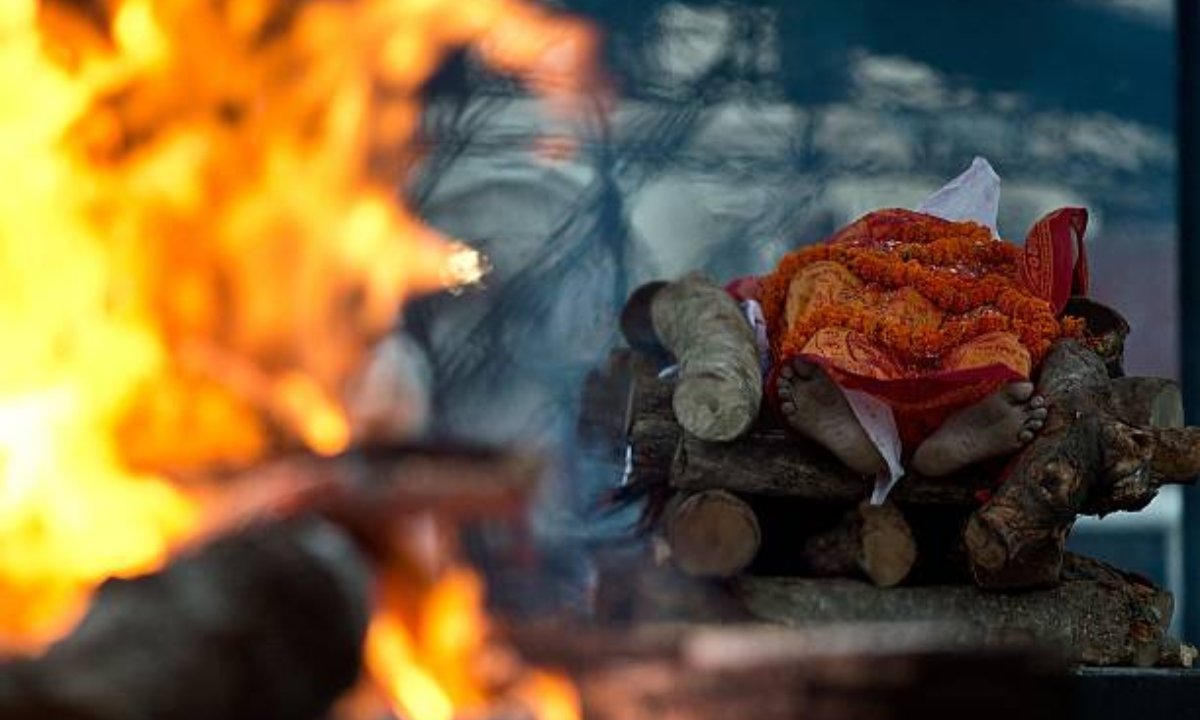According to Hindu belief, the soul shifts from its material existence into an endless state where proper funeral observances receive prime veneration. The Fire Ritual in Hindu cremation ceremonies honour three essential concepts: purity, transformation, and spiritual liberation.
This article explains the core meaning along with symbolic value and procedural details of the Fire Ritual which is central to the funeral traditions in Hinduism. The Hindu religious concept manifests its perspective on human existence and mortality.
Hindu Cremation Ceremonies

The cycle of birth, death, and rebirth which Hindu believers call Samsara is their core philosophical concept. Many believe that people continue their lives after death because their souls proceed along their spiritual path. Hindu spirituality aims for moksha, it allows the soul to achieve liberation through reaching divine union which releases them from the eternal cycle of birth and death.
Hindu funeral ceremonies function to assist the soul through its break from physical attachments so it can advance toward spiritual liberation known as moksha. Among all the Hindu rituals performed by believers, the Fire Ritual stands as a key element that supports this spiritual transmission process.
The Symbolism of Fire in Hinduism
Hinduism venerates fire by its Sanskrit name Agni as a spiritual cleansing power that serves sacred purposes. Handmade from physical substances fire connects humanity with divine transcendence while ferrying prayers and offerings between physical space and the realm of divinity. Fire continues to occupy a central position in Hindu spiritual traditions in wedding celebrations as well as healing rituals known as puja and funeral cremation ceremonies.
The Cremation Ceremony
Traditional Hindu cremation ceremonies follow specific steps while the Fire Ritual assumes a central role. We will describe these procedures one by one.
1. Preparation of the Body
Following death, the deceased person’s body receives a bath followed by neat garments before placement on a stretcher made from bamboo or wood. Based on regional customs the deceased body can get treated with sandalwood paste and then receive special offerings that include flowers together with sacred Tulsi basil leaves.
2. Carriers move the deceased person to reach the location designated for cremation.
People guide the body through a ritual procession leading to the cremation ground where sacred mantras are recited. During funeral traditions, the men in the family preserve the deceased’s body while maintaining their sacred responsibilities toward the departed.
Following Hindu tradition, the act of cremation close to sacred water bodies such as the river Ganga in Varanasi, is very auspicious because water possesses similar purifying properties to fire in the Fire Ritual.
3. The Fire Ritual and Cremation
After the body reaches the cremation grounds the core ritual of cremation takes place. A healthy fire begins the Fire Ritual process which takes place near the funeral pyre. Here are some noteworthy aspects of this sacred practice:
- Lighting the Pyre: A family member who is the eldest son has the ritual duty of starting the funeral fire. Depositing fire serves as a ritual that indicates transporting the soul upward.
- Mantras and Offerings: During Vedic recitations of the Fire Ritual priests instruct family members to perform the prayers. Those performing rituals add sacred items such as clarified butter (ghee) together with fragrant woods including sandalwood and other religious offerings to their fire.
- Symbolism of the Ashes: The burning of the body in the Fire Ritual signifies that earthly attachments – represented by the body – are destroyed. What remains are ashes, which symbolise the impermanence of life.
The fire here plays more than a physical role; it acts as a transformative agent, carrying the soul beyond its mortal constraints.
4. Post-Cremation Rituals
After cremation ends the family does a ritual by putting the ashes in holy rivers like the Ganges. A ritual burning symbolises people’s ultimate spiritual cleansing before natural burial.
Following the cremation part of the main Fire Ritual the family participates in ongoing prayers and spiritual ceremonies which extend for several days to weeks until the soul completes its journey.
Modern-Day Variations and Challenges
Traditional Fire Ritual core beliefs endure without transformation yet its current enactment encounters obstacles. Urban locations with constrained open space areas now use electric crematorium facilities as a substitute solution. The traditional Fire Ritual is still observed through symbolic or alternate ceremonies that respect its purpose.
Environmental talks about the deforestation of firewood and chemical pollution from cremation events have triggered extended public dialogue on these matters. Indian authorities developed environmentally friendly cremation procedures that unite ancient traditions with cow dung logs or other acceptable natural materials.
Conclusion
The ritual identity around fire must remain protected while we address environmental concerns. The Fire Ritual, which exists in Hindu cremation ceremonies, functions more than tradition because it represents complex spiritual and multifaceted symbolic expressions. Through the sacred ritual of fire, Hindus discover three essential Hindu teachings that merge spirituality with change and soul liberation.
The traditional Fire Ritual brings resolution while saving hope for grieving families. Through this sacred ritual, people can connect earthly matters with divine knowledge while the ritual guides the soul toward unconditional peace and spiritual freedom. Through their respect for this celebration, families reverence their ancestors and sacred principles that connect mortal beings during and after death.
The trusted company for cremation services in Bangalore, Beleiv provides residents with compassionate funeral arrangements that encompass both personalised rituals and traditional heritage practices like the Fire Ritual.




